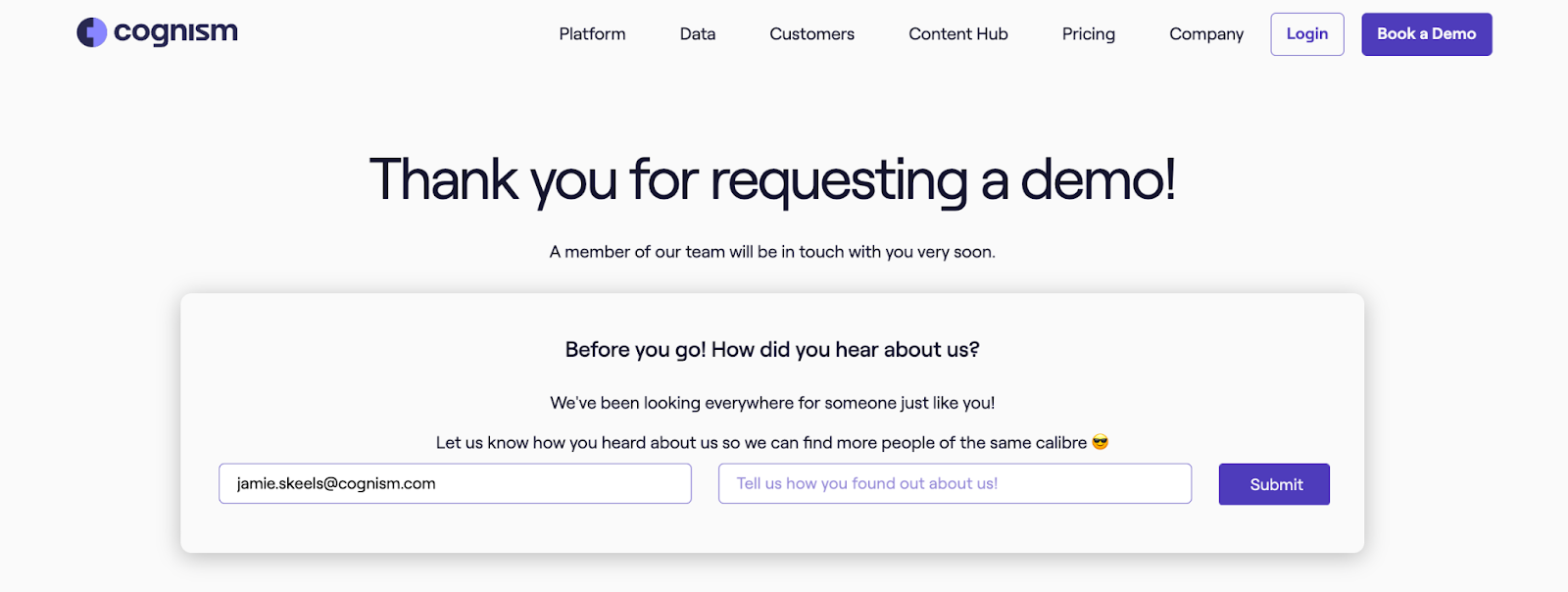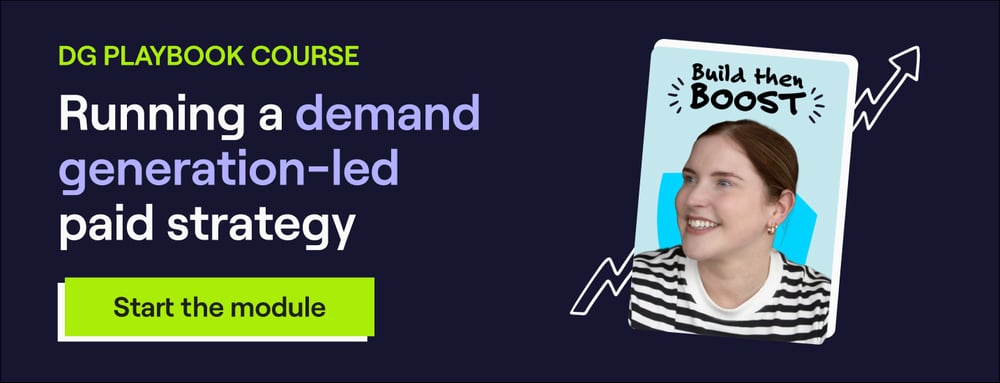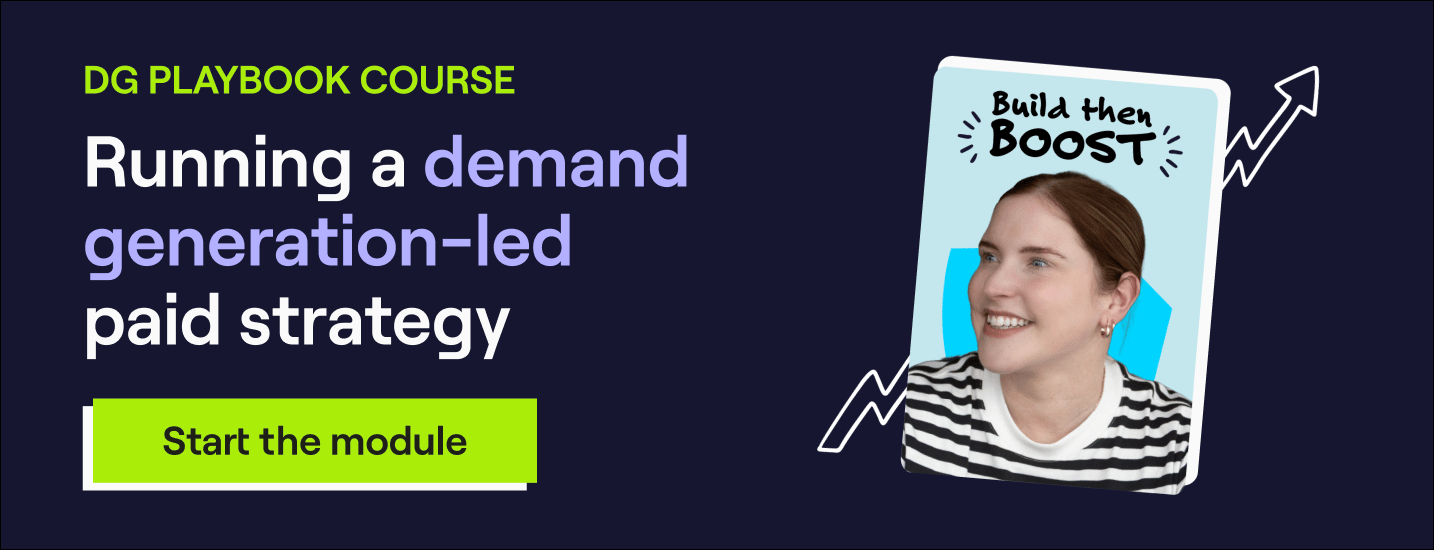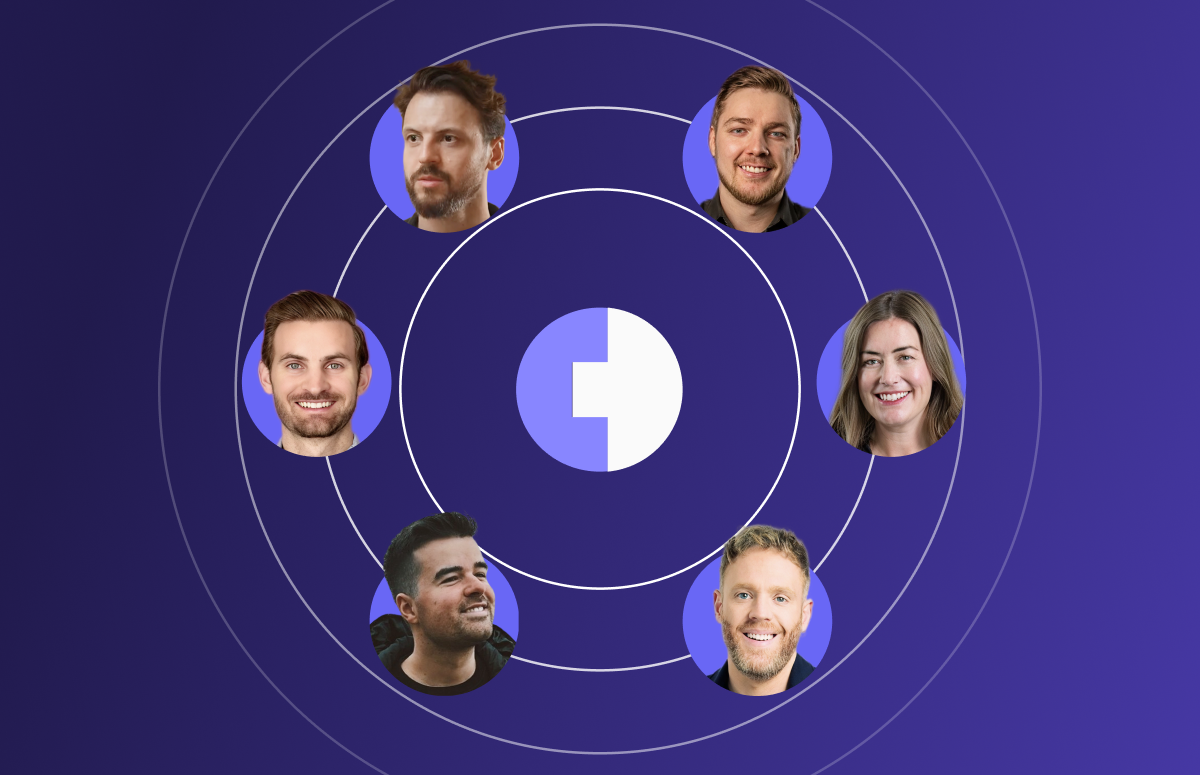Performance Marketing: All You Need to Know to Reach the Modern Buyer
The world of performance marketing can be a minefield.
So many different factors that can impact whether an ad is successful. So many channels to reach target audiences. Constant changes and updates to best practices to contend with.
Not to mention the evolution in the way that buyers buy.
So how do you navigate the paid landscape to find the tactics and plays that work in today’s market?
We speak to performance marketing mastermind Silvio Perez, Founder of AdConversion, to bring you up to date with a paid masterclass.
Using Capterra as a channel
Buying the right software isn’t easy when there are a couple of thousand options to choose from - all broadly doing the same thing.
Capterra is a review site that helps businesses find the best software. And as a place that draws a lot of in-market buyers looking for the best solutions to their problems… it presents a great opportunity for B2B paid ads.
Silvio said:
“If you’re working in an existing category, then using Capterra is a great option because people likely know and want to search for a business like yours.”
“If you’re in an emerging category, then this might be harder, although you could try bidding on an existing related category; it depends if the cost per click makes sense.”
However, one thing to note about using Capterra is that the CPC can vary dramatically based on regions. Not only that, but the conversion rates can vary wildly too.
Cognism’s Head of Paid, Canberk Beker, said:
“I tested UK versus US and other regions, and in the US it was much more expansive and conversion rates were much better than in EMEA.”
Silvio added:
“There can be a big variation in the price you pay based on which spot in the results you’re bidding for. The price for the top spot in Capterra - depending on the search term - can be much more expensive.”
Capterra still hasn’t rolled out their quality score feature beyond the beta test, meaning the top spot would no longer just be down to the top bid.
It would come down to the quality of the landing page experience, the relevance of the ad and how well-maintained your Capterra listing is. But it’s something to keep an eye out for in the future 🤞
Silvio said:
“You can get massive cost per click breaks by doing strategic position bidding.”
“If you’re pushing for efficiency in your ads, then bidding on the lower spots can definitely be worth it.”
“I have a theory - and I can’t prove it yet - but I feel like if someone is seriously looking for a solution, they don’t just click the top spot. They’ll scroll. And they’ll see you in the 4th spot.”
Using Twitter as a channel
Not using Twitter ads yet, but have a sneaky suspicion it’d be a good channel to test?
Silvio agrees!
“Twitter is still alive and well, people are using it every day. And my philosophy is if your ICP is hanging out somewhere and you can reach them to help them find solutions then it’s your obligation to test there.”
Silvio’s advice for getting started using Twitter for performance marketing is similar to starting any new platform.
Install a pixel and start building your retargeting audience. Then, start exploring the targeting options available to you.
He said:
“One of the best things to do when you’re figuring out Twitter is to create a draft campaign and run through the targeting options, just to see if it’s possible to get in front of your ICP. Try to win a winnable fight.”
“If your audience isn’t actively on Twitter, then it doesn’t make sense to take things much further.”
If all signs point to your ICP being on Twitter, Silvio suggests running a pilot campaign with around $100, just to figure out what your costs might look like.
Silvio added:
“I’ll give you a spoiler alert. It’s really freakin’ cheap. That’s the reason I love Twitter. I’m talking CPMs of under $5. You might as well be getting free impressions!”
Twitter ads have always been relatively cheap, but since Elon Musk took over the app, lots of big advertisers pulled their budget. The good new is it’s even cheaper than before!
Silvio said:
“Where there is chaos, there is opportunity. I wouldn’t let the conversation around Twitter hold you back from using it for ads if it makes sense for your business.”
One thing to remember if you’re planning to incorporate Twitter into your paid strategy is that it isn’t a conversion platform. You’re better off using Twitter for brand awareness.
Silvio shared his workaround:
“You can get conversions from retargeting. And one of the cool things about Twitter is you can retarget people based off impressions, not just engagement.”
“Meaning someone can just view your ad - they haven’t clicked it - but you can now retarget them.”
“The downside is that you might be building audiences with bad fit accounts, so you do need to be careful.”
In terms of prospecting audiences, if you’re serious about testing out Twitter for paid, Silvio recommended trying follower lookalike campaigns.
He said:
“If you know certain celebrities or influencers in your space that have good followings on Twitter, you can target people who look similar to their following.”
“I’ve found quite a bit of success doing that. Getting in front of people from Atlassian and Gong with cost per opt-ins between $5-$7.”
Twitter can also support customer lists. You can upload email addresses and create custom audiences using these.
However, the match rates (if you upload a list of 100k contacts, for example, and if the match rate is 10%, you see 10k contacts on the ad platform) tend to be fairly bad.
Silvio’s secret weapon is to use these email addresses to find Twitter handles and create your custom audiences based on them. This way, he has managed to dramatically improve match rates.
Using YouTube as a channel
YouTube is a channel with broad audiences. If you can get an offer and an ad creative that connects with them - you’re flying.
Silvio told us:
“The ability to scale on a platform like that is pretty limitless.”
“But you do need to think about your offer. I don’t think most B2B companies will be able to scale with just a demo offer because, generally, the offer won’t match the awareness in the audience.”
“This is where I think it’s time to test other things like free trials, or for example right now, I’m testing an assessment or audit style offer.”
Essentially, offering a free service whereby you audit or assess a system, website or other area of a business to show where optimisations could be made.
This is likely more attractive for the buyer as they can have an outside perspective on how to improve their business. But also, it gets a conversation going about problem solving issues that may exist that your product could help to fix.
YouTube attribution
At Cognism, we recently increased our YouTube ads budget by 4x, but we’re unable to see direct conversions.
Our view rates are increasing, and we can see our engagement rates improving, but YouTube ads are hard things to attribute.
For example, some people watch them on TV where you can’t click through - but that doesn’t mean the ad hasn’t made an impact.
One way to understand if YouTube ads work is to add a self-reported attribution form on your demo request thank you page.

We did this at Cognism and found that we had 10x-15x more reports of YouTube as the answer to ‘how did you hear about us?’ in January 2023 than we had in the previous six months after ramping up our YouTube spend.
Silvio also suggested another way to report on YouTube ads:
“You can set up view-through conversions. It’s not always 100% accurate, but it's great to get a sense of the direction.”
“I also like looking at the direct pipe to spend for what you’re able to attribute.”
“On the leading side, I’m looking at driving click-through rate, so I can understand if a video has legs. I’m aiming for a CTR of 2% and higher.”
One thing the Cognism paid team is now testing to get around the ‘YouTube ads on a TV’ issue is using QR codes.
This is showing a QR code during the ad so that interested viewers can scan the code and be sent to our landing page - which would be much easier to track.
This also means running specific ads for different device types that are watching YouTube; we want to ensure the journey makes sense for each.
High-quality creatives
As performance marketers, we tend to get a little carried away with the technical side of things. And sometimes that means we forget about the basics. Getting the messaging and creative ✨right✨
But these are what will ultimately draw your ICP in.
All too often, we try too hard to get an intelligent message out and overcomplicate things. Which only means the viewer has no idea what we’re talking about.
Silvio shared an example:
“We ran an ad and the original copy was ‘The cure for your organisational amnesia’, which alone didn’t make much sense.”
“And we did have some supporting copy, but you should always assume that someone only ever reads the H1.”
“So we changed it to ‘We help enterprise companies find critical documents in less than 60 seconds.’ which worked so much better.”
Creative is one of the biggest levers you can pull and it’s so often an afterthought.
It’s the thing that can make or break your success; we urge marketers to focus more on it.
Silvio concluded:
“You know you need more creative coming through monthly, so get into the flow of creating it regularly and making it a priority.”
Tracking and ad visibility
It might sound basic, but it’s all too common for businesses to lack effective tracking. Meaning they lose the ability to compare ad benchmarks against one another in a way that maximises insight.
Things as simple as structured naming conventions can allow paid marketers to group certain ads together.
Silvio shared an example:
“If you have consistency across your ad names, it’s much easier to filter them so you can compare one ad type with another.”
“You don’t just want to be looking at the individual ad performance, but the accumulation of performance across the ads.”
“So when I name my ads, they all fall into a specific concept. Such as ‘before and after’, ‘social proof, or ‘artificially generated’.”
“This way, I can pull each of the ads in that ad set, summarise it and compare it to other ad types to see which is working the best.”
Silvio explained that you can even drill into this further. If you include ‘copy 1’ or ‘copy 2’ into your naming conventions as then you can compare all of the ads using copy 1 versus copy 2.
The infrastructure you build in naming conventions becomes so crucial in being able to properly compare to make decisions for what to continue.
Marketers also need to look at their tracking models carefully in the coming months, as Silvio warned:
“I think GA4 is a ticking time bomb. I speak with a lot of people using GA4 and I ask them what they’re doing about the 14 month expiration and they say ‘what do you mean?’.”
If you’re unsure what Silvio is talking about - GA4 has a maximum time frame for retention of user-level data, including conversions. This can be set to a maximum of 14 months.
The problem is you can no longer do data analysis and comparisons to events older than 14 months.
Silvio explains that the solution to this is working with third-party data tools. While they won’t be able to resolve all the accounts, they will be able to give you a better long-term view.
Using gift cards
Can using gift cards work, and if so, when can you use them?
Silvio’s short answer is yes - they can work really well!
He said:
“The way I think about it is a value exchange. Gift cards are helpful because it makes the value proposition fall further in your favour.”
“And you can get people into conversations a little earlier in the process - before they have a real urgency to talk to you.”
The main objective is to start a real conversation where the AE can develop a relationship with an account - you’re not necessarily trying to get an immediate conversion. Just to get a good fit account into your orbit.
The trick is to make sure that you’re offering gift cards to the right accounts. Otherwise, you’ll generate a lot of pipeline and people speaking to sales - but none have any realistic chance of converting or becoming a long-term customer. Ultimately meaning no revenue.
Silvio says:
“If you’re trying to scale demo requests on a cold audience that doesn’t have brand affinity, then they might be helpful because it can help you push the scaling wall.”
“But it can also backfire if you don’t make sure you qualify the people who redeem the offer. For example, making your form or landing page offer pop up on the second message versus the first so you can add in qualifying text.”
Performance marketing strategy: the last word
We will leave Silvio to close out this masterclass of a blog with some final words of advice.
“Now that targeting has become such a commodity, there are really three main levers you can pull for growth on paid media today.”
1. The ad experience
“Where are you driving people to? How does that landing page look? What is your messaging?”
2. Your offer
“In the B2B world , we can be very complacent and unimaginative with our offers. We default to what we know, demo requests or free trials.”
“But what I’m seeing is that no matter how awesome your product is, people aren’t requesting demos because they aren’t in the financial position to.”
“We need to get more creative as marketers with the offers we provide - maybe assessments or audits, where it helps us to start a conversation to open a deal in the future.”
3. Your creative
“How are you presenting yourself to the world? How do you make sure your creative is at the forefront of your efforts and not just an afterthought?”


/SMB%20ABM/Blog_Image_How%20SMBs%20Can%20Run%20Enterprise-Level%20ABM%20on%20a%20Lean%20Budget%20%20Resource%20Card.webp)

